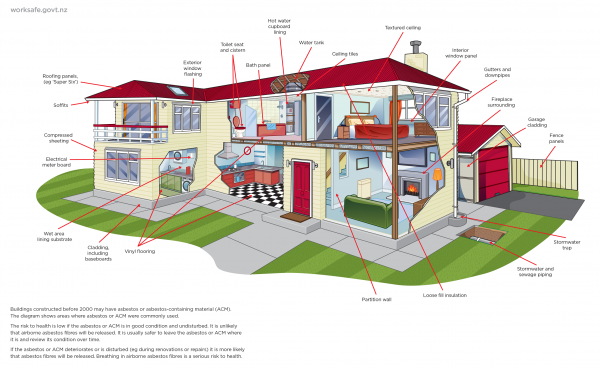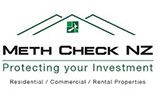Managing Asbestos In Your Rental Property
June 14, 2018 at 11:15 AM

The Health and Safety At Work (Asbestos) Regulations 2016 states that if Asbestos is in the workplace, an asbestos management plan is required for that workplace where asbestos is likely to be found and this must be completed by the 4th April 2018.
Asbestos was a common building material used between 1950 to 2000 and it was often used as a fire retardant and insulation. It can often be found in places such as: sprayed-on fireproofing, soundproofing, thermal insulation, decorative coatings, floor coverings (such as vinyl), cement products, roofing sheets and lagging around pipes. If this material containing Asbestos is breaking down in any way (dust particles) or activity is occurring on the property will disturb that material, then asbestos is a serious health hazard.
Once the fibres are breathed in, they lodge in the lungs and may cause diseases like asbestosis, lung cancer and mesothelioma.
Why does legislation about health and safety at work affect me as a residential landlord?
The Health and Safety at Work Act (HSWA) applies to all business activities. Owning a rental property is considered a business, so the Act applies (section 20). Under the regulations, landlords of rental premises are PCUBs (persons conducting a business or undertaking) and must follow the laws for that role. Fines for not complying with this legislation can potentially be as much as $1 million and also involve jail for very serious breaches.
Most of the time your rental is a home, not a place of work, and in those periods there are no HSWA obligations on the landlord. But as soon as a tradesperson steps foot onto your property, it becomes regarded as a workplace and your legal obligations kick in.
What does this mean? What are my responsibilities and legal obligations?
Landlords have a responsibility to manage the risk of asbestos and have a ‘duty of care’ to ensure the health and safety of tenants, neighbours, contractors and anyone else who may be affected.
Any time a tradesperson such as an electrician or a plumber enters the property to undertake work, you are responsible for any safety issues that may result from existing asbestos. For example, if a plumber needs to drill a new hole behind the toilet, or an electrician wants to insert a new light fixture in the ceiling this could dislodge harmful asbestos fibres.
If your house was built between 1950 and 2000, there is a reasonable likelihood that the walls or ceilings may contain asbestos. With this risk, the relevant asbestos must be identified and an asbestos management plan prepared. A landlord may write the asbestos management plan themselves, or they may employ someone else to do it.
I have a property manager, am I still responsible?
Yes. As a landlord you are a PCUB – (person conducting a business or undertaking). This also includes your Property Manager as a Property Management company. Both have a responsibility to manage the risk of asbestos and both have a ‘duty of care’ to tenants and other occupants of the property and must take reasonably practicable steps to comply with this Act.
As an owner of a rental property that is managed by a property manager if you suspect you have asbestos in your property, you must inform the property manager and follow up to ensure action is being taken on managing asbestos.
What do I need to do in identifying and testing for Asbestos?
If your rental property is built between the years 1950 and 2000, and you are planning on undertaking major repairs or renovations then you will need to carry out an Asbestos Management Plan prior to work starting. We strongly recommend that you engage the services of a certified Asbestos professional who can assess the risk and if required take samples to be tested in an IANZ accredited laboratory.
What is an asbestos management plan?
An asbestos management plan sets out where any identified asbestos or asbestos containing material is and how it will be managed. All asbestos management plans must be in writing and they can be in hard copy or electronic form. The plan must include information on the following:
- Identification of asbestos and where it is located – in what wall, window etc
- how you plan to manage the asbestos risks if any exists (e.g. remove it, encapsulate it with a false wall or paint, leave it alone as it is in good condition, etc.)
- what procedures you will follow for when work is to be undertaken that may disturb the asbestos or asbestos containing material
- how you will record incidents or emergencies involving asbestos
- a timetable for managing asbestos exposure risks (e.g. priorities and dates for removal, reviews, circumstances and activities that could affect the timing of action) – which should be reviewed in six months, or after an incident or emergency
- procedures, including a timetable for reviewing and (if necessary) revising the asbestos management plan and asbestos documentation (note at a minimum this MUST be every five years).
- Information on any workers who carry out work involving asbestos, including their training, roles and responsibilities and health monitoring.
What if my rental property has asbestos but it is non-friable and in good condition?
If the asbestos contaminated material is undisturbed and in good condition it is perfectly safe to leave it undisturbed, if the work taking place is routine maintenance or other minor work. It is only if there is damage, then you or your Property Manager will need to take steps.
What if my rental property has asbestos but it is deemed unsafe?
You may have options to seal it, encase it or completely remove it. We highly recommend you engage the services of a licensed professional for their advice. The tenant must be informed and advised of any requirements to temporarily vacate the property to ensure the occupants safety. The tenant must continue to pay rent but alternative accommodation must be arrange and paid for by the landlord.
For further information regarding asbestos watch the below video or feel free to contact us direct.
https://www.youtube.com/watch?time_continue=55&v=84NxgIoVc_0






